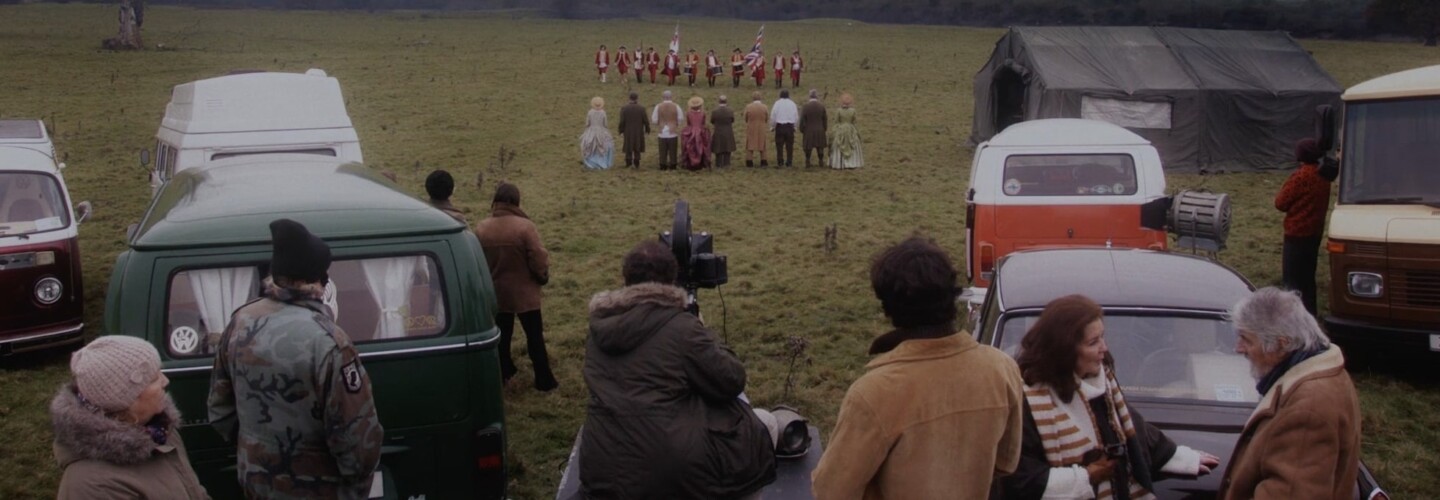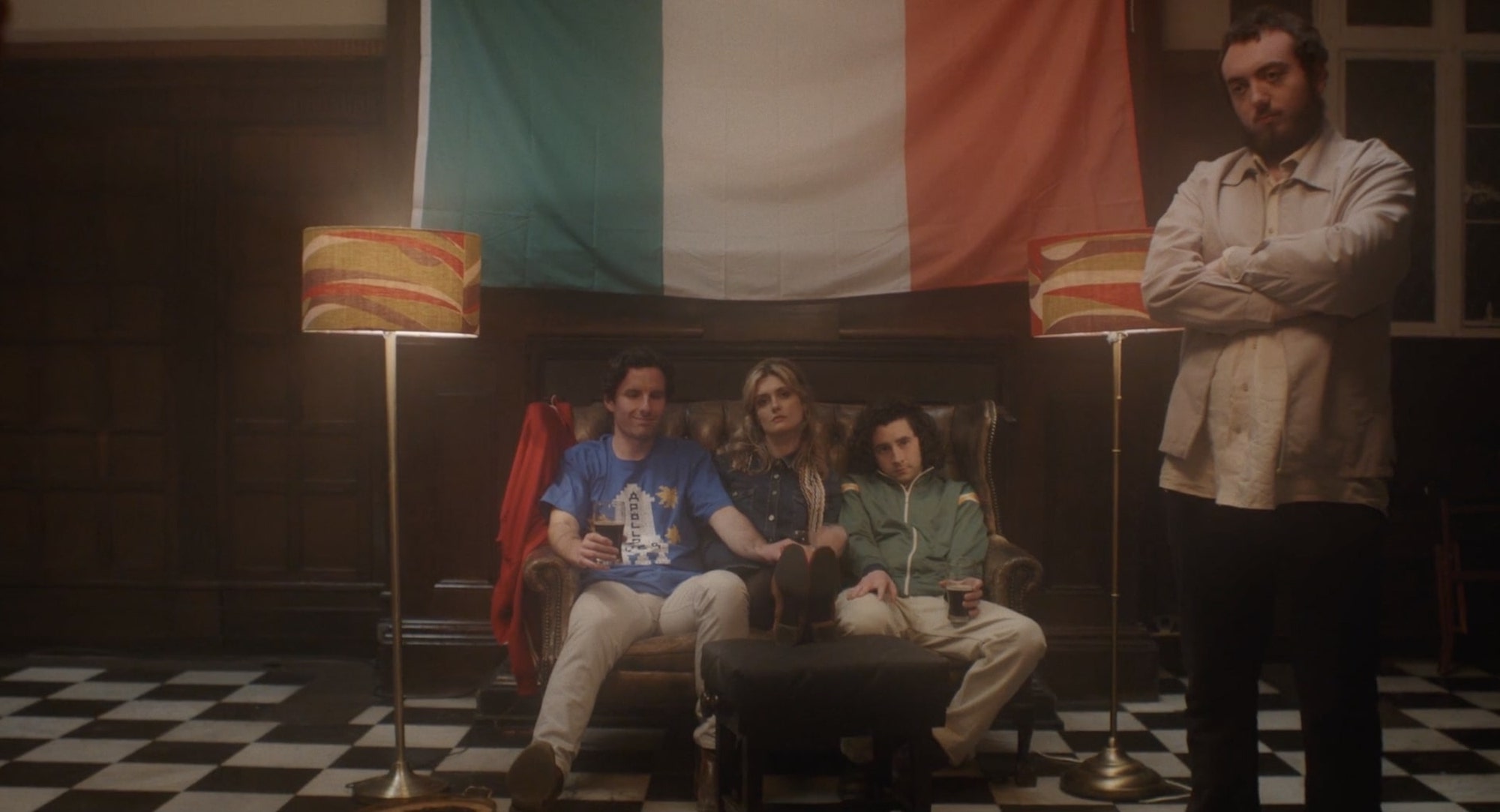
Considering we share the same rare first name, I’ve always had a strong affinity with Redmond Barry. His epic travails across Europe – lovingly, beautifully, cynically portrayed in Stanley Kubrick’s once-underrated, now-reappraised classic Barry Lyndon – carry the sweep of history while never losing its romantic core. Like most Stanley Kubrick projects, the behind-the-scenes antics, including a potential threat from the IRA, are legendary – they also prove fertile ground for a metafictional exploration of the life of a below-the-line film crew falling in and out of love across the Irish countryside. With Kubrick By Candelight, location-manager-turned-director (and Stanley Kubrick superfan) David O’Reilly weaves a delicate romantic metafictional comedy that functions both as a tribute to the legendary filmmaker’s unique cinematic vision and as a delightful short in its own right. We had the chance to talk to O’Reilly about recreating Kubrick’s cinematic techniques, being inspired by countless days on big feature film sets and nabbing a pre-Succession Brian Cox for a crucial role.
This film is a labour of love; a behind-the-scenes of a classic that’s filled with homages and references to the genius of Kubrick. What attracts you to the filmmaking of Kubrick and Barry Lyndon in particular?
Being attracted to Kubrick is very easy. Like most filmmakers I am in awe of the sheer depth, imagination, precision and beauty of his work. Those qualities are amplified in Barry Lyndon which amazingly often gets forgotten within such a strong catalogue of movies (although I think it’s been embraced much more in the last decade or so). Barry Lyndon is hypnotic in many ways.
I am not a great fan of period costume dramas but Lyndon is so stately, sumptuous and funny that it hypnotises. So the obvious thing for me to do is make a 70s comedy with a kick-ass soundtrack, jokes about Ryan O’Neal’s toilet habits and a caper subplot of candle stealing whilst keeping the Ken Adam and John Alcott aesthetic and weaving the Troubles into a Romeo and Juliet style story – all on a tiny budget!
I am in awe of the sheer depth, imagination, precision and beauty of his work.
How did you think about telling a story within the story? Was it obvious that you wanted to tease out English-Irish relations through this particular time?
I had read and heard stories of the infamous call that made Kubrick flee from Ireland overnight and it had always intrigued me. I’ve worked with Michael Stevenson – renowned Assistant Director who worked with Kubrick many times and indeed answered the phone in Dublin. He’s 100% convinced it was a genuine threat from the IRA! So I liked the edginess of English redcoats parading around Ireland in 1973 and found a way to weave a love story around which would give us structure, help us examine the tension of the time and ultimately give me my own angle on the phone call and who made it…
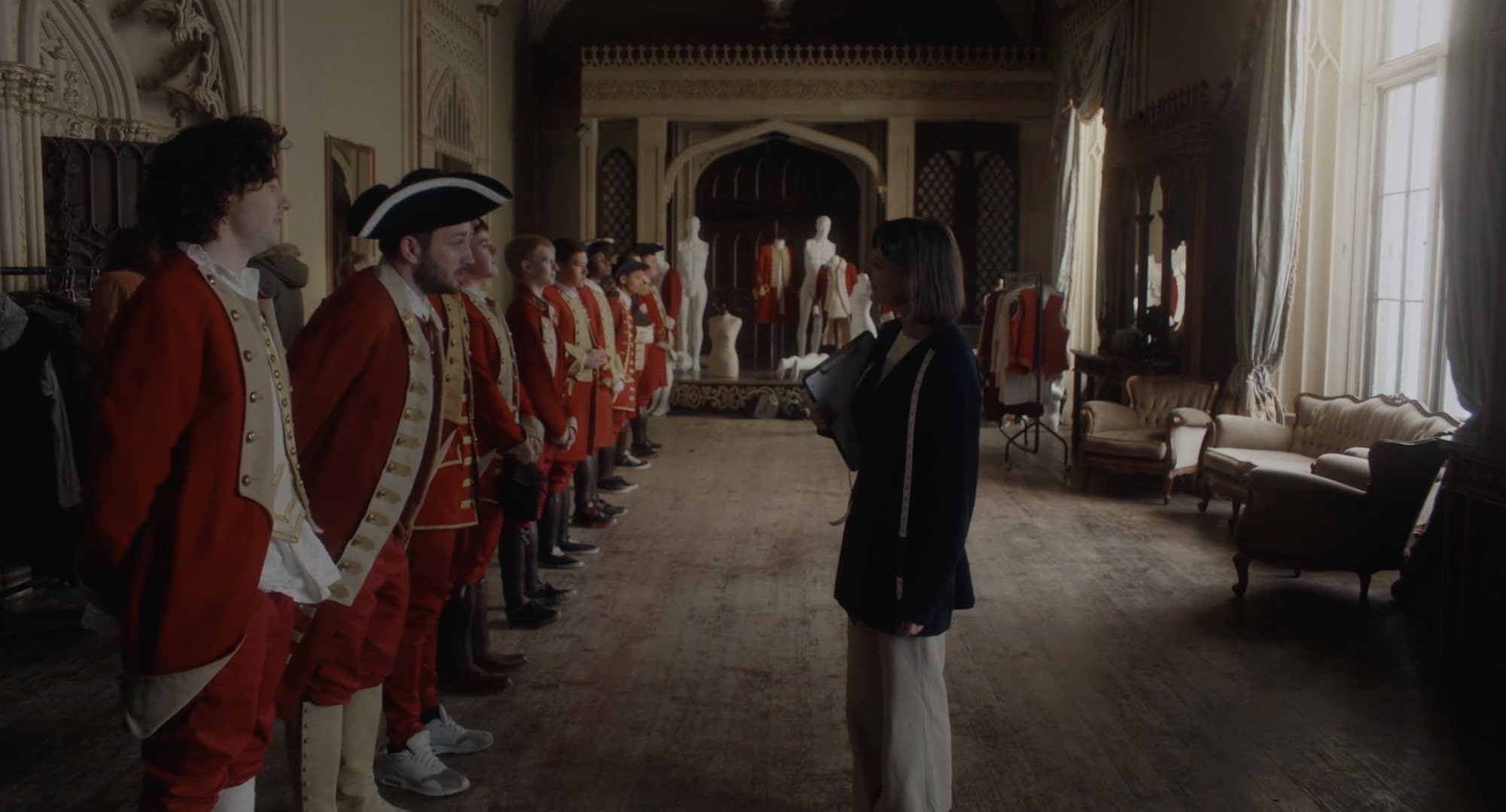
I’d love to learn more about the setting as well. Were you filming in the same place that Kubrick did?
As part of our FilmOffaly Bursary win we had to shoot the film in the Irish county of Offaly. We had a wealth of great dramatic locations in and around Tullamore – also where all of my family come from – but we needed a very specific area in County Waterford for the opening scene so our VFX Supervisor Paddy Eason expertly put an iconic mountain into our flat field in Offaly.
Part of the inspiration is that myth (and sometimes) reality of the raucous horny travelling circus that is a film crew on location.
We were supremely (stupidly) ambitious and in the space of four days shot in a field with classic cars and VW vans, in a beautiful castle, in a pub, three churches, various streets and recreated Dublin Port behind a former distillery. We followed this shoot with a day in Shepperton Studios filming some inserts for our montage and VFX work so in effect we were shooting where Kubrick had shot 2001!
You actually work as a location manager so being behind the scenes must be something you can relate to?
Part of the inspiration for Kubrick by Candlelight is also that myth (and sometimes) reality of the raucous horny travelling circus that is a film crew on location. My job is fairly stuck in the prep period so I rarely see the Ray Cooney bedroom farce part – maybe it doesn’t exist any more, maybe I’m just not invited! (I did put in some slamming bedroom doors in the montage as a nod to Cooney, Feydeau and Carry On).
But I was attracted by the idea of what would have been a much smaller, tighter film crew on the road in Ireland, all staying in the same hotel, drinking pubs dry, making girls (and boys) cry whilst creating one of the most beautiful films ever made. Another theme is the dirty chaos that exists behind the camera – mud, blocked toilets, chain smoking, bacon sandwich eating, complaining, hungover men (and tragically to a lesser extent women) but it all comes down the rectangle frame and exquisite beauty and serenity. All films are the same really.

Apparently there are 90 references throughout the short! I must have counted around 10-20 myself. What was it like hiding easter eggs throughout the movie?
It was great fun for me! Not so much for the art department! Paddy Eason also put in some easter eggs with VFX which is very self-indulgent on our behalf but great fun. Apart from obvious thematic references to Barry Lyndon, we, of course, have plenty of references to other Kubrick films via visuals, music cues, costumes, set dec and even within the credits. I have a list of 90 but a viewer sent me a list recently with nearly 130 references he had found so there’s something in there for everyone!
Another thing I really enjoyed was the use of various metafictional techniques. In this light story, you get the sense that they understand they’re in a movie and play around with it. Was this always part of the original script? What was it like working on that?
I’ve always been interested in the fourth wall, metafiction and that turn to camera to address the audience. Someone called this Lyn-Ception – we have a film about a film and we went to Ireland to make a film with English Redcoat extras just like Kubrick (we didn’t get any threatening calls). It’s a film about storytelling as well so I liked the idea that the whole town would be in on it – dazzled by the filming for sure but also massively cine-literate and aware of their presence in a story. Brian Cox is a part of that as well – an unreliable narrator, like Michael Hordern in Barry Lyndon – but also actively involved in the story he narrates.

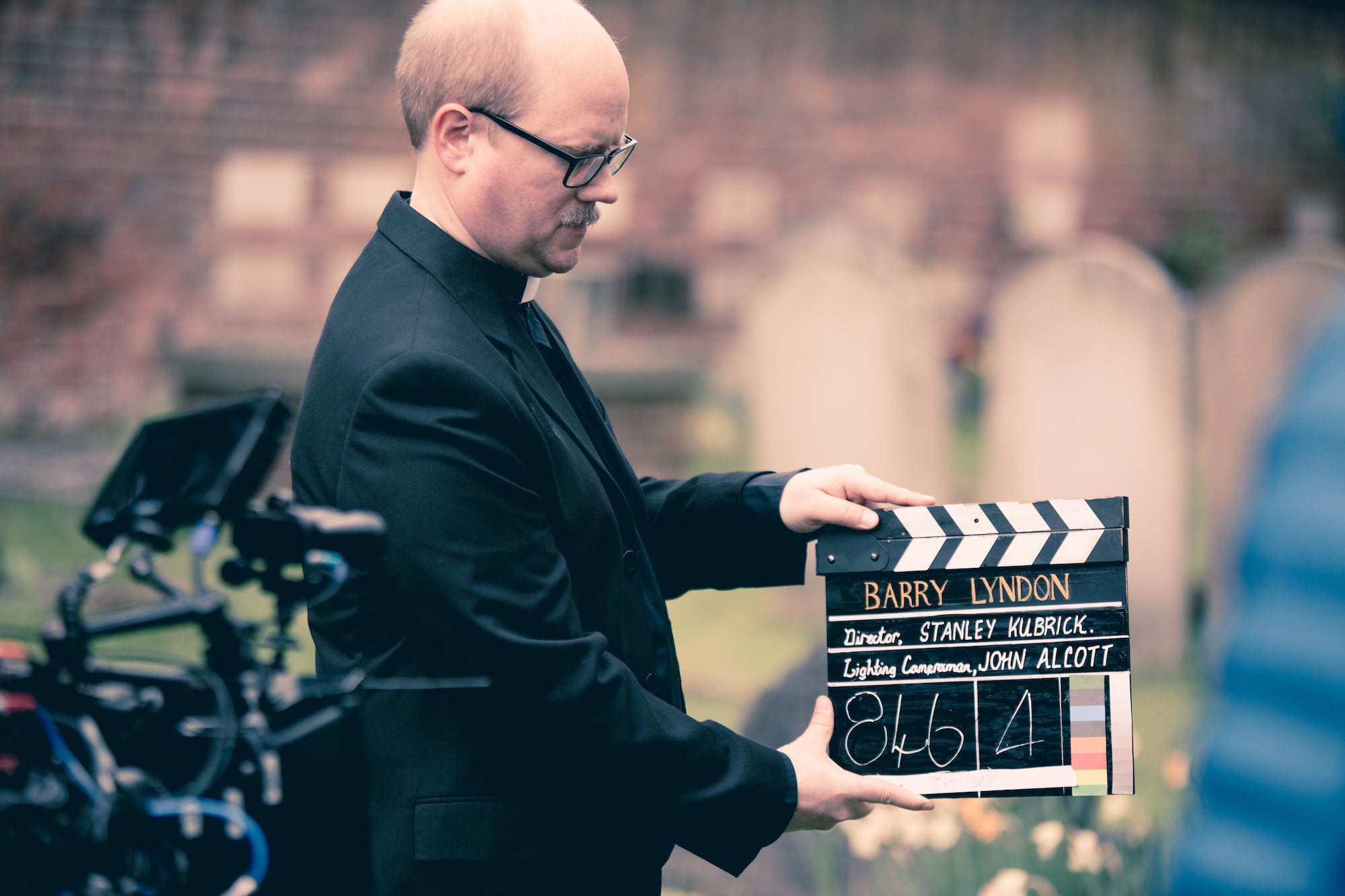
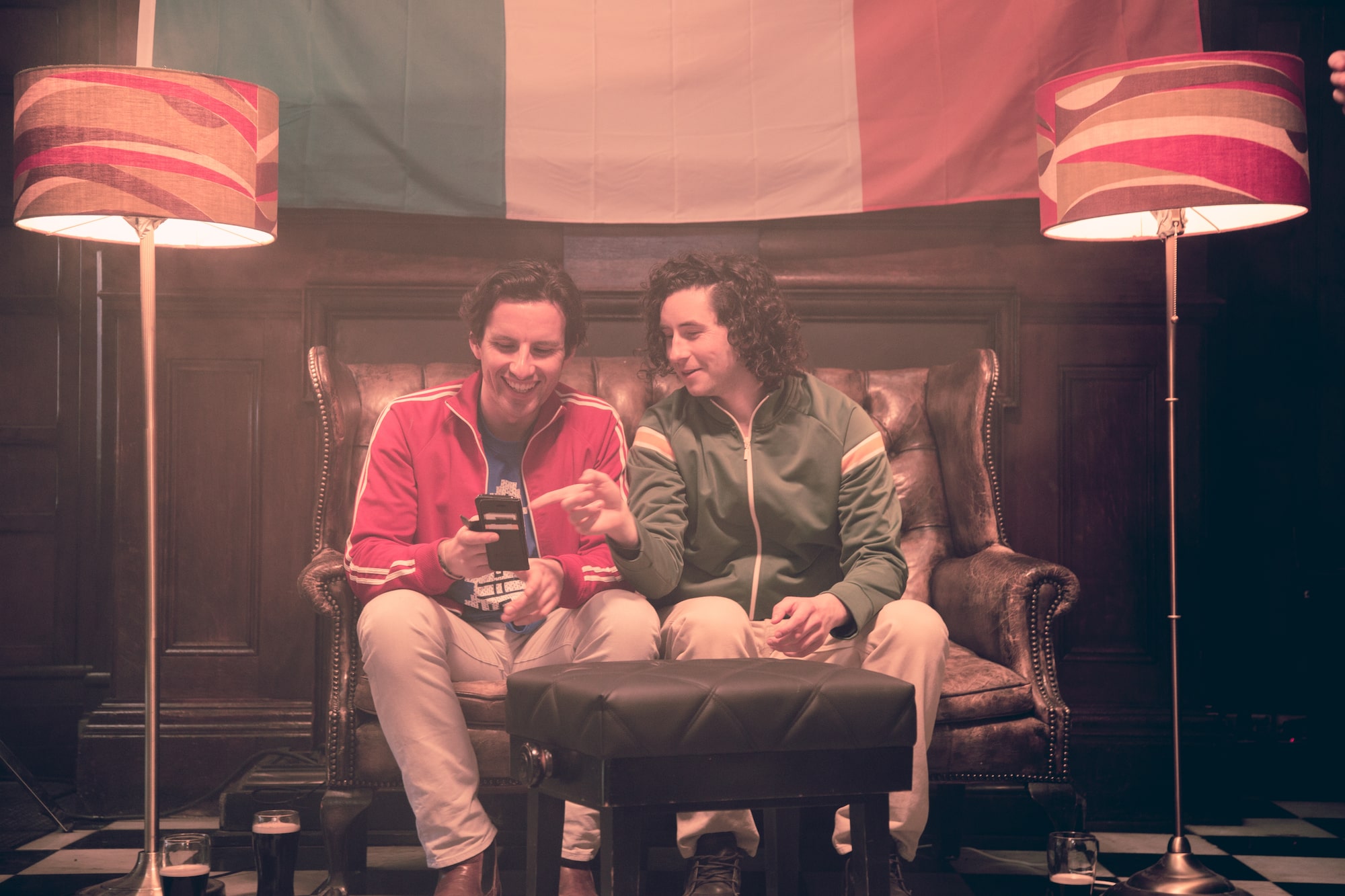
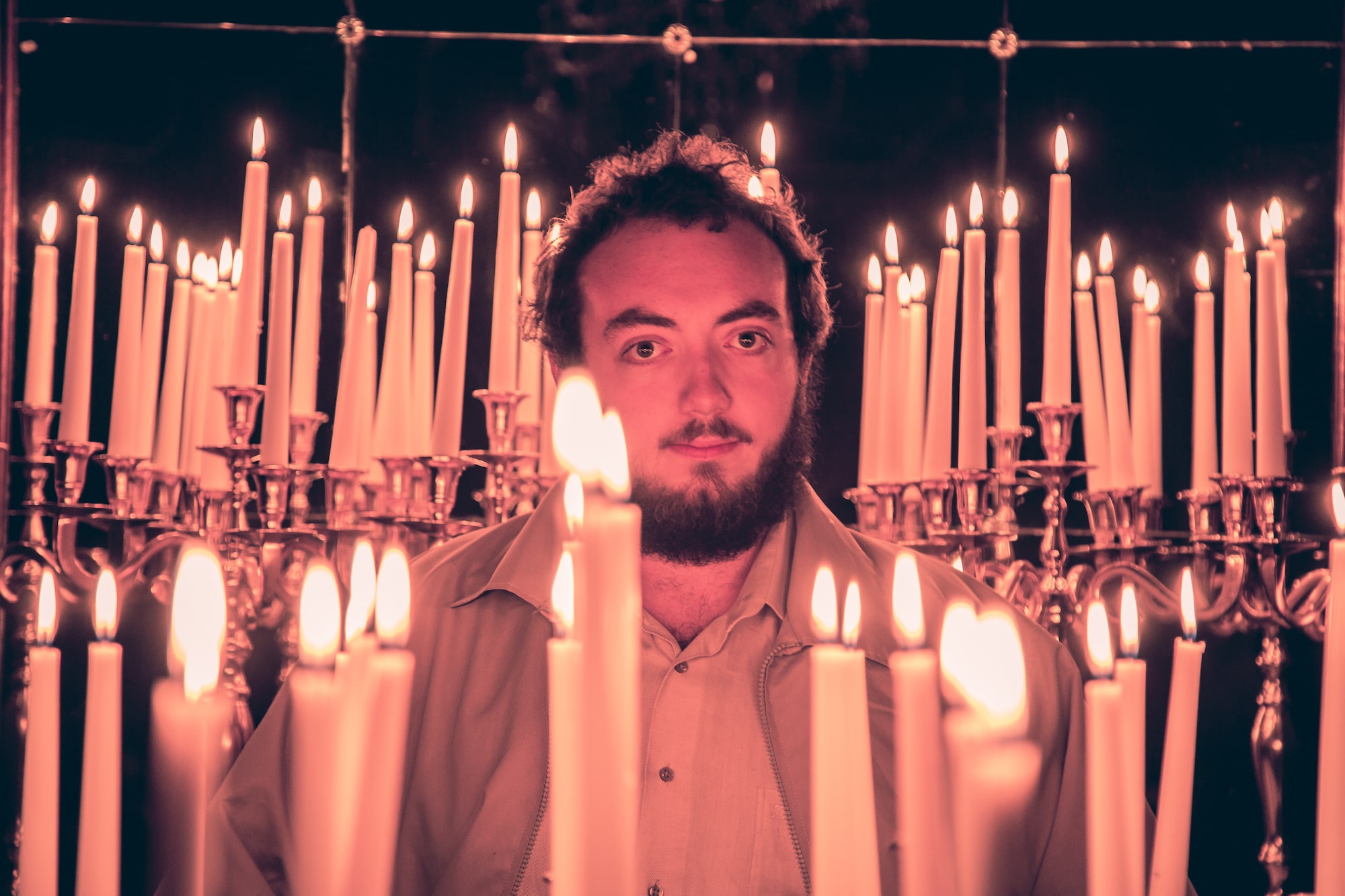

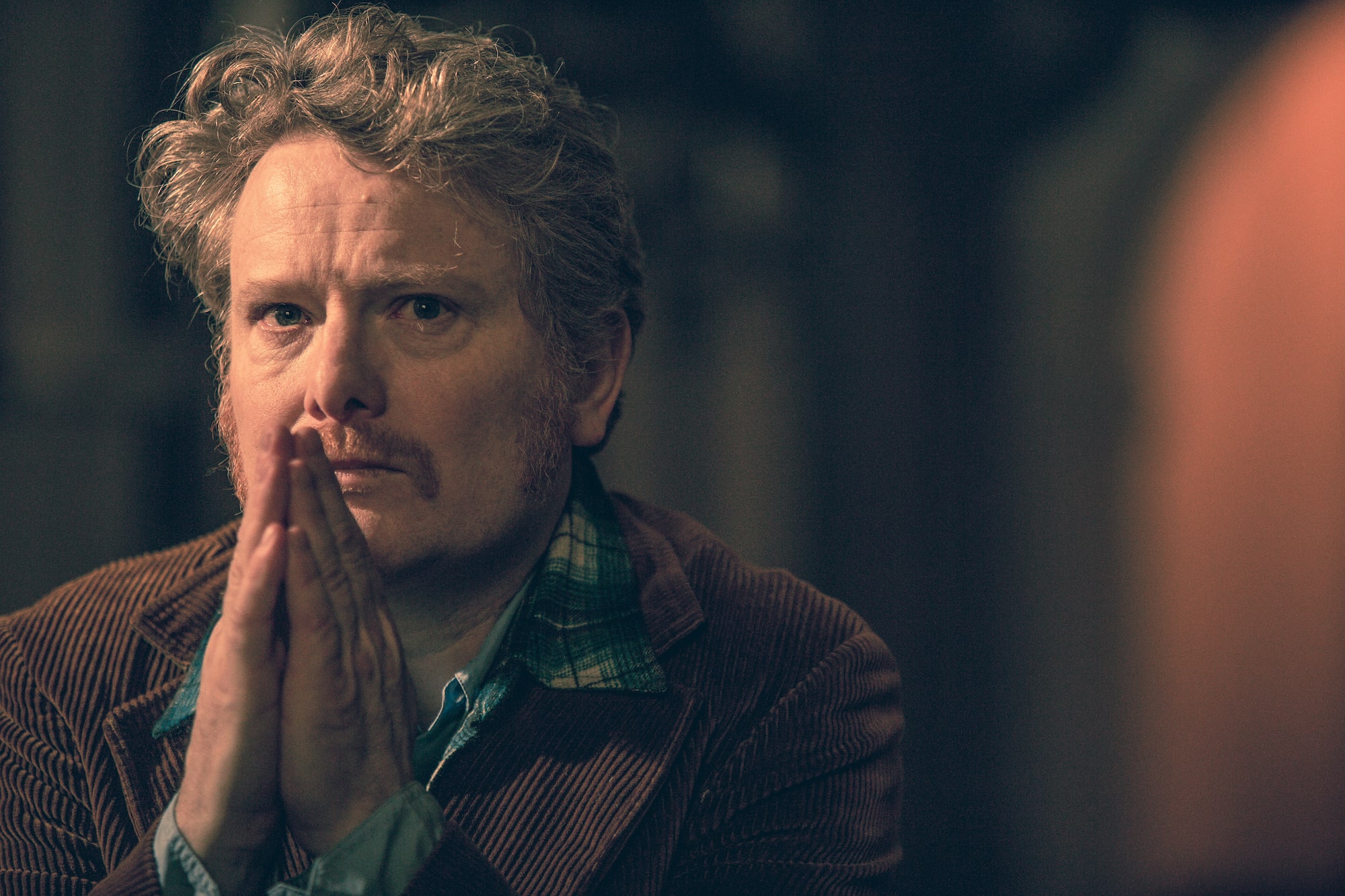
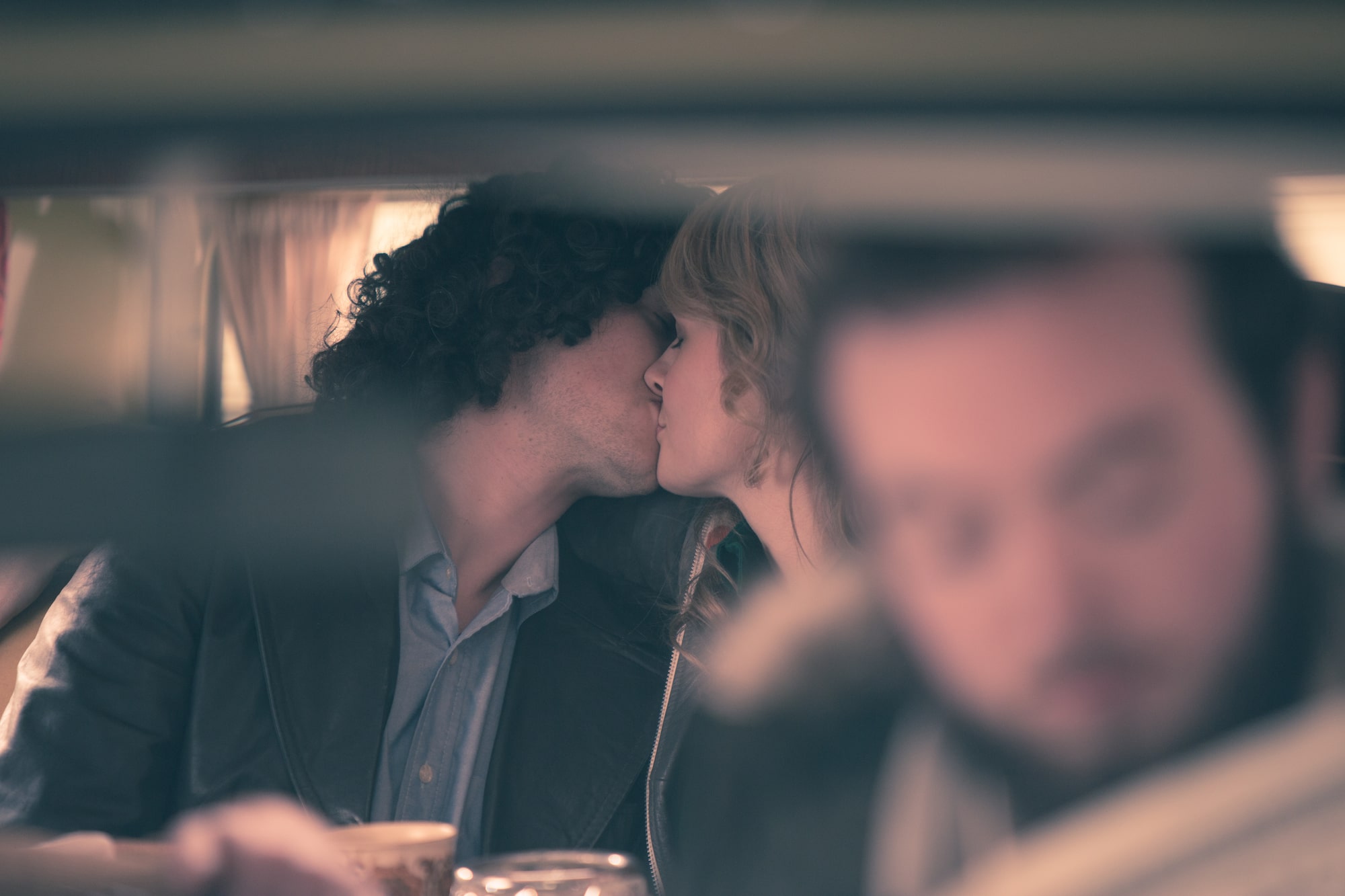

I’d love to know if you replicated the same natural lighting technique as Kubrick in this film. I assume you didn’t have access to Carl Zeiss Planar 50mm lenses! What lenses did you use?
Well, the good news is that, with the Alexa, we didn’t have to get NASA involved although we did look into hiring the lenses which at the time were in Germany. The tricky job of trying to replicate the work of John Alcott was given to the great Cinematographer Stil Williams who gave us such a beautiful looking film. If you’re going to make a movie about Barry Lyndon you definitely have to bring your A-game. Stil and his team (with great thanks to Arri and Pinewood MBS) really did. Add the incredible Colourist Jonny Tully in post production and I think we made a good job of making this short film feel like a feature film and indeed feel like a little slice of Alcott.
If you’re going to make a movie about Barry Lyndon you definitely have to bring your A game.
The score and needle drops help to immerse us in this atmosphere. Tells us about working on the music?
Working on the music was a real joy. With my other films, music has been a part but not something I invested much time in. This was a different experience but massively rewarding. Initially, I hooked up with my extremely talented cousin, Gavin Cowley, who introduced me to the music of Cromwell – a little known 70s Irish rock band – who had some really fun tracks. I tracked down Patrick Brady from Cromwell and he very kindly let us use the music which I think really grounds the film in the time. Gavin then recruited Ewan Cowley and Joe Csibi to create original music and reinterpretations of classical music and traditional Irish music used in Barry Lyndon.
The recording of the music at The Meadow Recording Studios was something really special – Ewan, Joe, Gavin and a host of top musicians playing a variety of instruments. My imposter syndrome was off the charts that day. Later we also invited the son of composer Seán Ó Riada, Peadar, to play on his father’s famous traditional Irish song Women of Ireland, which featured so prominently in Barry Lyndon. That was a pretty amazing connection to the tapestry of the film.
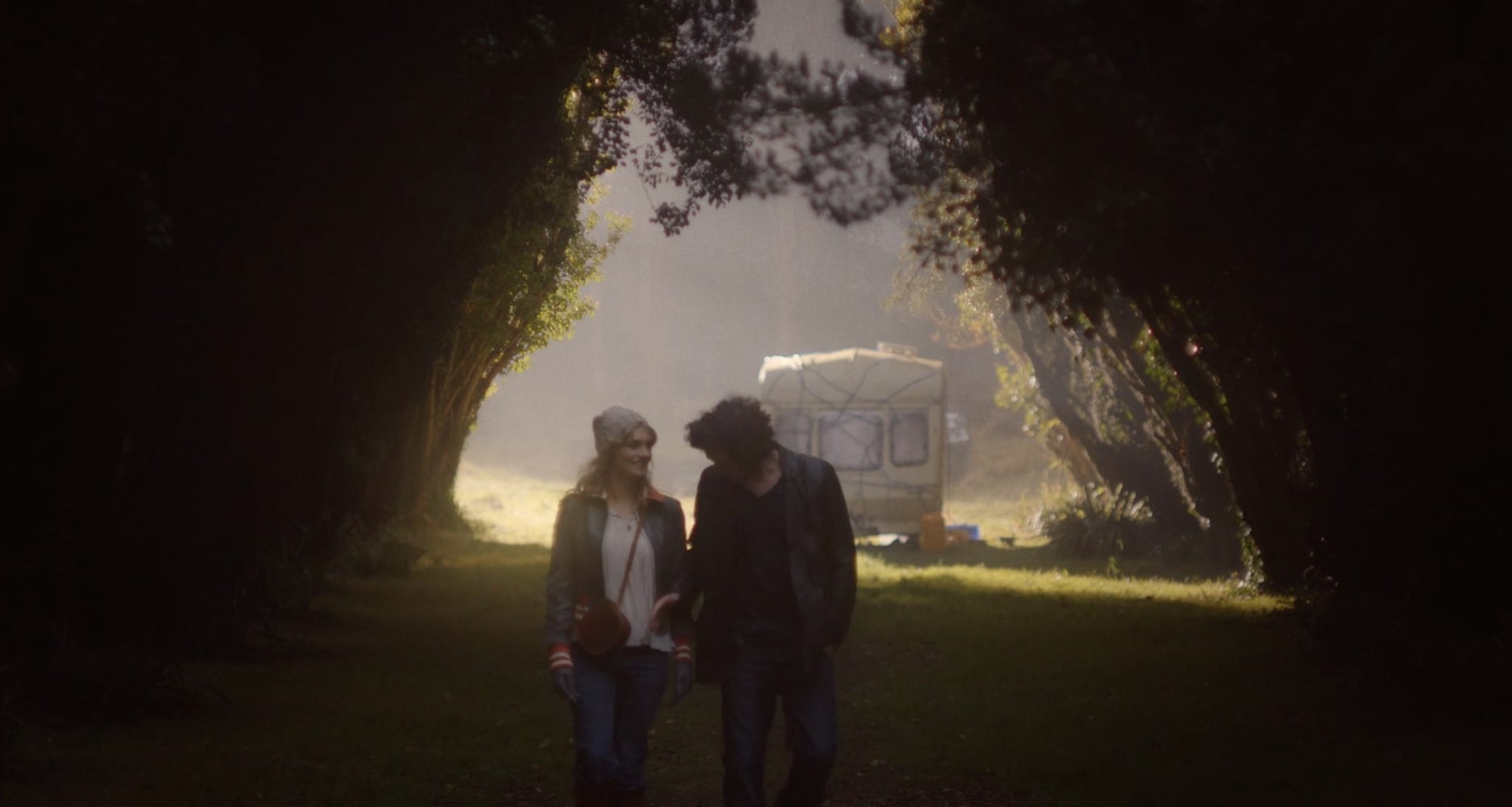
Did you study the formal compositions of the original quite a lot because I do notice that you use the reverse zoom rather often as well – which is the trademark shot of the original!
We did and the language of Kubrick’s film became part of our own although I was intent on our film embodying “Hot Lyndon” – a 70s romantic comedy version which had some heat and youthful vitality. We used the reverse zoom for the opening shot and I was also very keen to recreate the stunning composition of Ryan O’Neal sitting in the club. With some little VFX tweaks, it became our key marketing image.
I have a list of 90 but a viewer sent me a list recently with nearly 130 references he had found so there’s something in there for everyone!
The person you have playing Kubrick himself is a dead ringer! How did you find the right actor? Additionally, did you know you always wanted him to be a silent presence in the movie?
I was really lucky to find the lovely Mike Nolan. I went through the Starnow website with my search set to men with beards – within a few minutes I had Mike, emailed him, told him not to cut his hair and we had our Stanley! I did actually have a scene in the vein of Romeo and Juliet with our hero looking up to hotel windows trying to find his beau and Stanley opens a window and we have a bit of dialogue.
We cut it mainly because of time and money but in some ways keeping Kubrick there but not there referenced Kubrick’s mystery of himself – rarely giving interviews and in fact having a guy in Soho pretend to be him for years. Nowadays that mystery is either impossible or the marketing department wouldn’t allow it. I suppose only someone like Terry Malick gets away with it presently.

Brian Cox himself plays the narrator. This is before worldwide fame in Succession! What is he like to work with?
I had gone through a fairly long list of Irish actors – most of the principal cast of The Banshees of Inisherin turned me down! – and got very close to getting Liam Neeson but he ended up shooting a movie in Alaska at the time we needed him so we moved on. I’ve always been a huge fan of Brian Cox so I tried him: his agent called me back and said he was available the very next day so we scrambled for a recording studio in Soho. He was great to work with and he really got into what was really an acting job rather than a narration job. At the time he was on hold for a HBO show he was about to fly off to shoot which, of course, became Succession and the rest is television history; so my timing was impeccable if not completely accidental.
What are you working on next?
Myself and Producer Vinnie Jassal were so exhausted physically, mentally and financially after we shot, edited and then toured KBC that we were certain that we didn’t want to make another short film – we had gathered enough equipment and crew for KBC, that in another 10 days (and a script!) we’d have made a feature. So I have been working on feature film scripts but of course, that’s another ballgame!
After too much of a gap I am back working on several big short films – one a big hearted film about Amelia Earhart and Ireland and the other a metafictional, metaphysical film set within the famous Copacabana corridor in Goodfellas. Feature-wise I am writing a full version of Kubrick by Candlelight which might incorporate the love story moving from Kubrick film to Kubrick film over the years. And I am always looking for collaborators and like-minded creatives.

